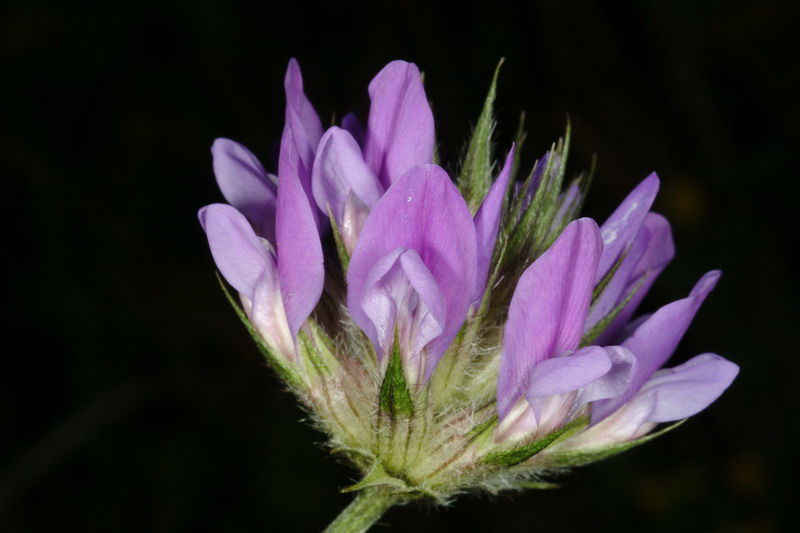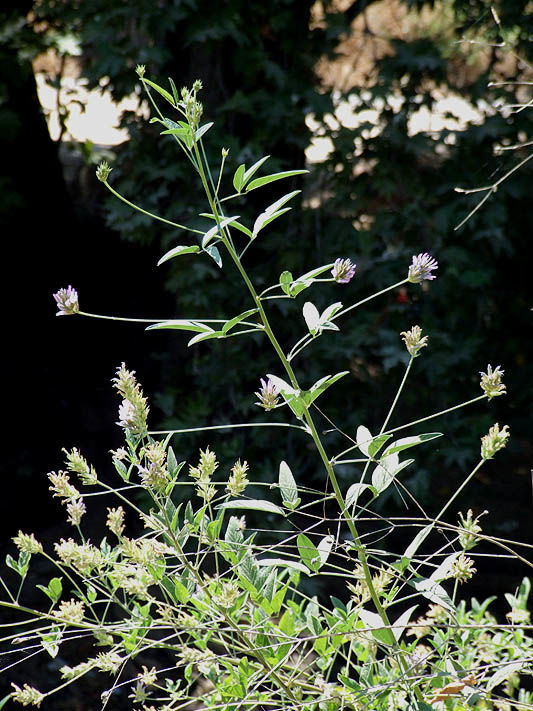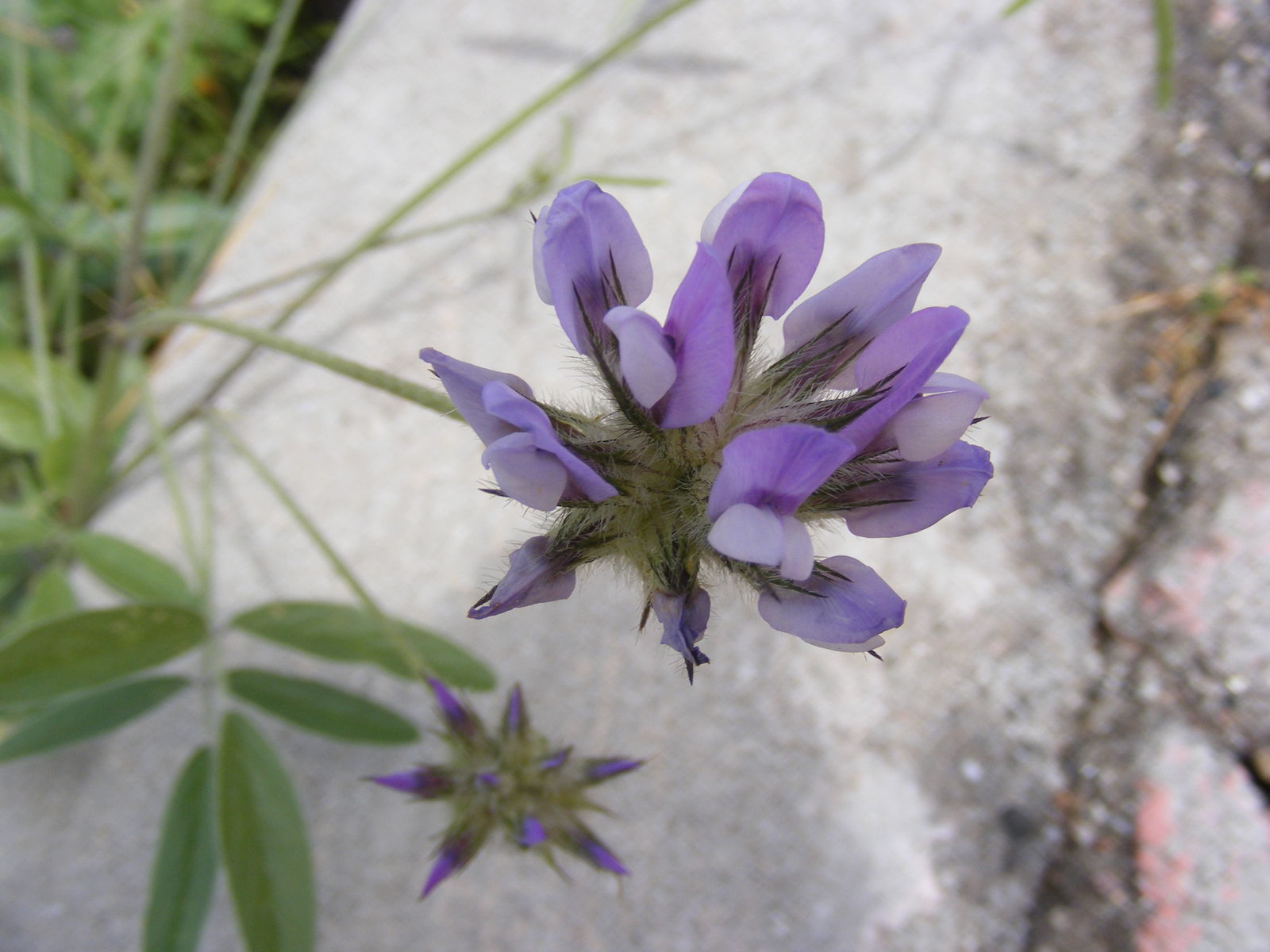Tara
bituminaria bituminosa
Also known as: ["Tara","Bituminous clover","Tar plant"]
Overview
A perennial legume with aromatic, silvery-gray foliage and yellow pea-like flowers, native to the Mediterranean region.
Benefits & Perks
["fragrant flowers","wildlife attractant (bees, butterflies, birds)","drought tolerant","shade tolerant"]
Botanical Classification
| Phylum: | Magnoliophyta |
| Class: | Magnoliopsida |
| Order: | Fabales |
| Family: | Fabaceae |
| Genus: | Bituminaria |
| Botanical Name: | Bituminaria bituminosa |
Plant Characteristics
Basic Information
- Category: Flowers
- Suitable Location: outdoor garden in a sunny, sheltered spot
- Suitable For:
- Is Weed: No
- Allergenicity: low
Environmental Needs
- Climate: {"temperatureRange":"5–35°C"}
- Hardiness: {"zones":"8–10"}
- Misting: rarely required
- Drainage: Fast-draining to prevent root rot.
- Soil Type: Well-draining, sandy or loamy soil with some organic matter.
Maintenance Level
- Maintenance Level: moderate
- Toughness Level: high
- Pruning Frequency: Annually in late winter or early spring before new growth begins.
- Pruning Intensity: Moderate; remove up to one-third of the oldest stems to rejuvenate the plant.
Care Details
Ideal Sunlight Coverage:
Full sun (6–8 hours of direct sunlight daily); tolerates partial shade but may become leggy with insufficient light.
Sunlight Tolerance Tips:
Acclimate plants gradually to intense sunlight to prevent scorching; provide afternoon shade in hot climates; ensure good air circulation to prevent fungal growth in humid conditions.
Care Requirements
Care Difficulty
moderatemoderate
Sunlight
full sun
Rotate plant for even growth; use shade cloth in extreme heat; avoid placing in drafty areas.
Watering
every 7–10 days during active growth, less frequently in winter
Water thoroughly until runoff, ensure soil dries between waterings, and avoid overhead watering to prevent fungal issues.
Soil
well-drained, sandy or loamy soil
pH: Slightly acidic to neutral (pH 6.0–7.0).
Ensure soil dries between waterings; avoid heavy clay soils; amend with organic matter for fertility.
Temperature
Prefers warm temperatures (65–85°F / 18–29°C); can tolerate mild frosts but thrives in heat.
Protect from frost; water early in the day; adjust care based on seasonal temperature shifts.
Fertilizing
every 4–6 weeks during spring and summer
Fertilize lightly; avoid high-nitrogen formulas; apply before new growth emerges.
Propagation
Methods
Stem cuttings or division of established clumps.
Step-by-Step Propagation Guide
- Take 4–6 inch cuttings.
- Remove lower leaves.
- Dip in rooting hormone (optional).
- Plant in moist medium.
- Maintain humidity.
Best Time: Spring or early summer when the plant is actively growing.
Environment
Warm, humid conditions (70–80°F / 21–27°C) with indirect light.
Medium
Well-draining potting mix (e.g., cactus mix with perlite or sand).
Hormone
Optional, but rooting hormone can improve success rates.
Timeline
Roots may develop in 4–6 weeks; establishment can take 2–3 months.
Tools Needed
Pruning shears, rooting hormone, pots, well-draining soil mix.
Quick Tips
Use healthy, non-flowering stems; maintain consistent moisture; provide bottom heat for faster rooting.
Pruning & Repotting
Pruning Guide
Method
Selective thinning of older stems; light shaping of new growth.
Pruning Plan
Prune to maintain shape, encourage bushier growth, and remove dead or damaged stems.
Tools
Pruning shears, loppers (for larger stems), gloves.
Checklist
Sterilize tools; prune before new growth; remove dead/damaged stems; shape as desired.
Repotting Guide
Best Season
Early spring before active growth begins.
Pot Size
Increase pot size by 2–3 inches in diameter.
Method
Remove plant gently; trim any circling roots; place in a slightly larger pot with fresh, well-draining soil; water thoroughly after repotting.
Suggestions
Repot every 2–3 years or when roots fill the container; beneficial for container-grown plants to refresh soil and provide space.
Checklist
Choose appropriate pot size; prepare fresh soil mix; handle roots carefully; water after repotting.
Advanced Care Tips
Watering Mastery
Watering Checklist
Check soil moisture before watering; water deeply at the base; ensure proper drainage; adjust frequency with seasons.
How to Apply Water Properly
Water directly at the root zone, ensuring even saturation to a depth of 6–8 inches, allowing excess water to drain freely; water in the morning to minimize evaporation and fungal growth.
Watering Schedule Tips
Water deeply once every 7–10 days during active growth in spring and summer; reduce frequency to every 2–3 weeks in fall and winter, allowing soil to dry between waterings.
Soil Improvement
Add perlite or coarse sand to improve drainage; incorporate compost for organic matter.
Temperature Stress Management
Signs of Temperature Issues
Chlorosis or leaf drop in extreme cold; wilting or scorching in excessive heat.
Cold Stress
Low temperatures slow growth and may cause leaf damage or dieback; prolonged cold can lead to root rot.
Solution: Provide frost protection (e.g., mulch, row covers) in cold spells; ensure good drainage to prevent waterlogging.
Hot Stress
Excessive heat can cause leaf scorch, wilting, or reduced flowering; may go dormant in extreme drought.
Solution: Provide afternoon shade; increase watering frequency; use mulch to retain soil moisture.
Fertilizing Guide
Fertilizing Checklist
Use balanced fertilizer; apply in spring; avoid over-application; water after fertilizing.
Fertilizing Method
Use a balanced, slow-release fertilizer in early spring; avoid over-fertilizing, as Bituminaria is not heavy feeder; reduce or stop fertilizing in fall and winter.
Common Problems & Solutions
Toxicity Warning
Cats
Non-toxicBituminaria bituminosa is not considered toxic to cats. It does not produce any known harmful effects when ingested or touched by felines.
⚡ Toxic If:
Generally non-toxic
Dogs
Non-toxicBituminaria bituminosa is not considered toxic to dogs. There are no documented cases of adverse effects from ingestion or contact with this plant.
⚡ Toxic If:
Generally non-toxic
Humans
Non-toxicBituminaria bituminosa is not considered toxic to humans under normal circumstances. It has no known adverse physiological effects when handled or ingested in typical amounts.
⚡ Toxic If:
Generally non-toxic
Frequently Asked Questions
Q: Is Bituminaria bituminosa toxic to pets?
A: There is insufficient data to confirm toxicity to pets.
Q: How does Tara grow in different light conditions?
A: It tolerates both full sun and partial shade, though flowering may be reduced in deep shade.
Q: What are the uses of Bituminaria bituminosa?
A: It is used as an ornamental plant, for erosion control, and as a source of tannins in traditional medicine.
Quick Reference
| Family: | Fabaceae |
| Care: | moderate |
| Light: | full sun |
| Water: | every 7–10 days during activ |
Get Expert Care Tips
Download the Plantious app for personalized care reminders and plant identification!
Google Play App Store








